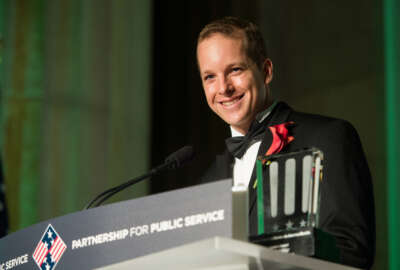

In Depth's Francis Rose says the biggest problem with the public and private sector salary comparison is that no one is quite sure how to compare them. But one...
I understand why you’re angry about the Cato Institute study on federal pay. But really, try not to let it bother you.
The analysis lists a lot of numbers, all of them showing that the federal government pays its people more than the private sector does its employees. That may be true, it may not be true. To me that’s the bigger problem than the Cato numbers; we just don’t really know, because no one can agree on how to measure differences and match up job descriptions between the public and private sectors.
I suspect President Obama came closest back in 2010, when the Washington Post quoted him: “the data we get back indicates that high-skilled workers in government are slightly underpaid. Lower-skilled workers are slightly overpaid relative to the private sector.” He attributed the disparity to the prominence of unions in the federal workforce.
Back in May I proposed a civilian employee compensation commission, similar to the military’s effort. I continue to believe it’s the only way to really gain knowledge about what the federal workforce earns, what they should be paid and what their benefits package should look like.
And until someone — or some group — constructs a framework that all the stakeholders can agree on to compare public and private sector pay, the whole discussion is moot.
So don’t get all worked up about the Cato study. Trust me, as dysfunctional as Congress is today, it will be a long time until members get around to really studying this issue.
I’ve said many times on the air and off, that the Sammies medals ceremony is my favorite night of the year in D.C. It’s a celebration of excellence in government, and every year Max Stier and his team produce an event that rivals Hollywood and New York galas.
I’ve been fortunate to get to meet, at least over the radio, about half of the finalists each year (my colleague Tom Temin meets the other half), and each of them is so accomplished, so talented, that I rarely favor one over another.
This year that was a little different. Back in August I met Ed Hugler, who’s known as the Labor Department’s Mr. Fix-it. After the interview was finished, I remember thinking “what a humble guy, just nice.” He seemed genuinely surprised that he was being recognized for doing what the agency, and ultimately the country, needed him to do. With no disrespect or malice to the other finalists (indeed, I didn’t even know who the other finalists were at that moment), I recall thinking, “I hope he wins.” The video presentation about Ed, posted below and shown at the awards, tells his story far better than I could.
Fast forward to last Wednesday night. Ed did win, and he was as gracious and humble in receiving the award as he was in talking about it on my show.
I said on this week’s Federal News Countdown that Ed was my favorite because if you walked down the street and asked a hundred people if curing cancer, fighting Ebola, or any of the other things Sammies winners did were big deals, I bet a majority of people would say sure. If you asked them if saving a financial management system and standing up Benefits.gov was a big deal, you’d probably get shrugged shoulders and a lot of “meh.”
People in government like Ed — and there are many, many of them — don’t do these jobs to get famous, but they sure do understand that they’re important.
These are good people, these people that dedicate their careers to serving America.
Copyright © 2025 Federal News Network. All rights reserved. This website is not intended for users located within the European Economic Area.

